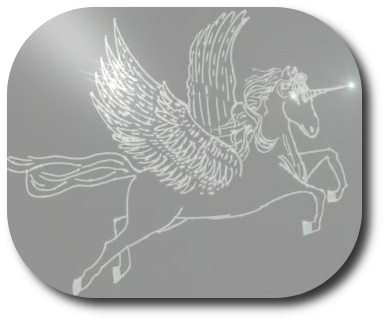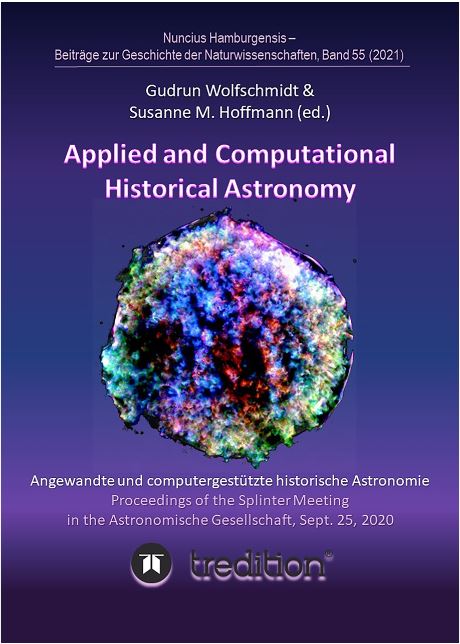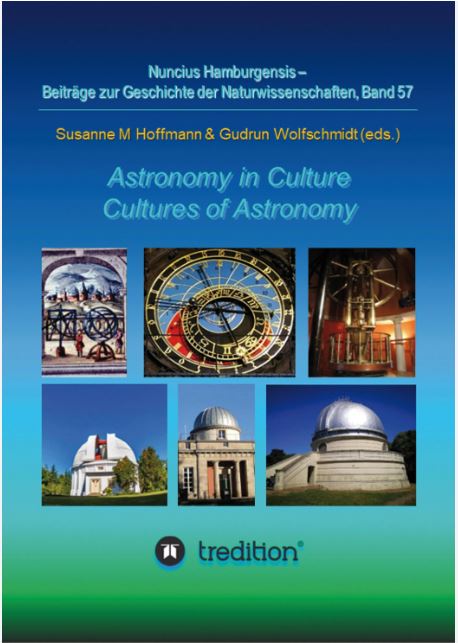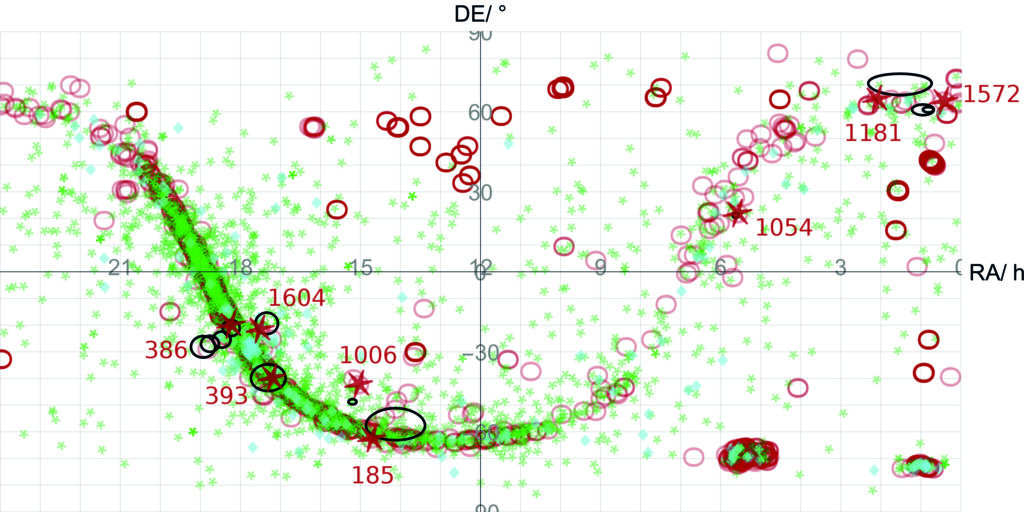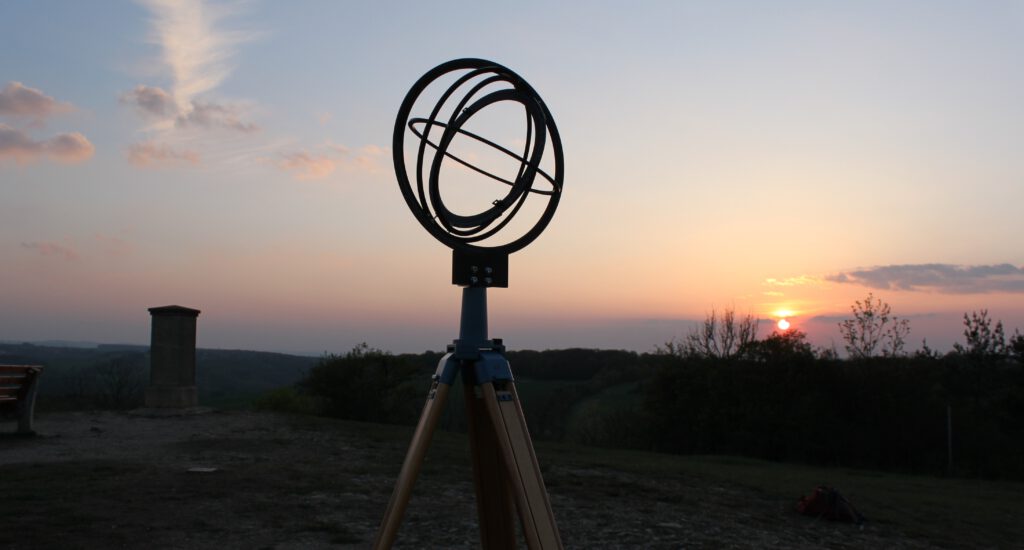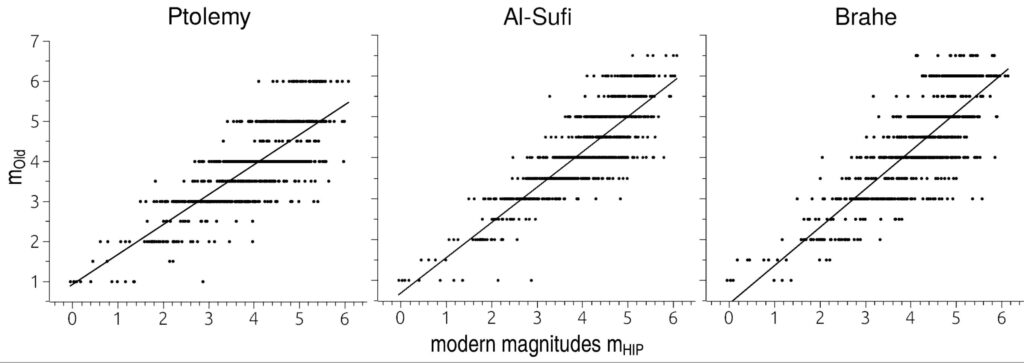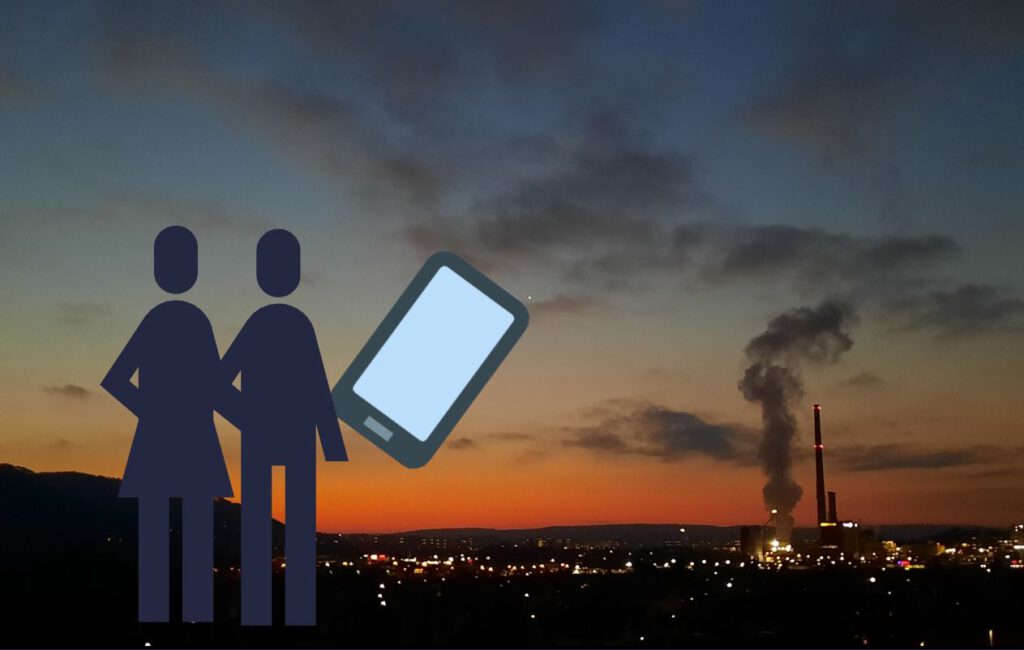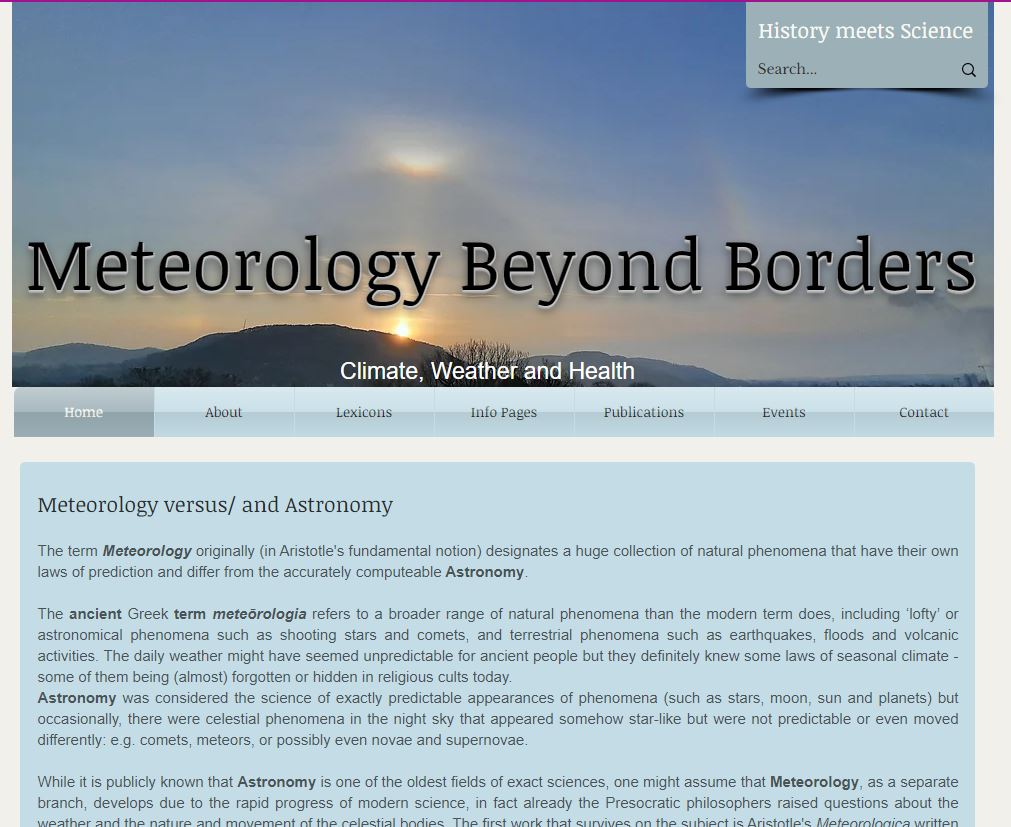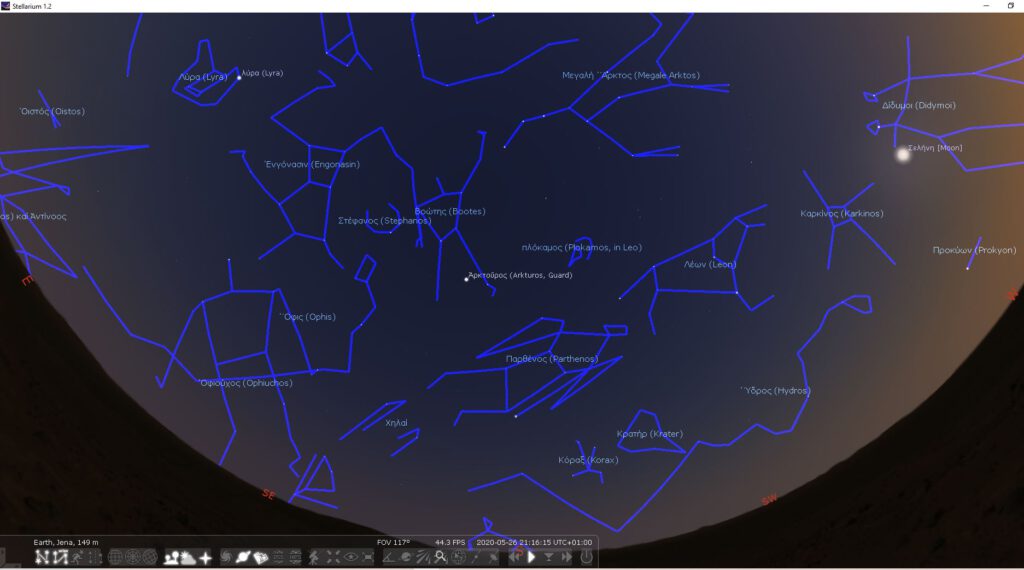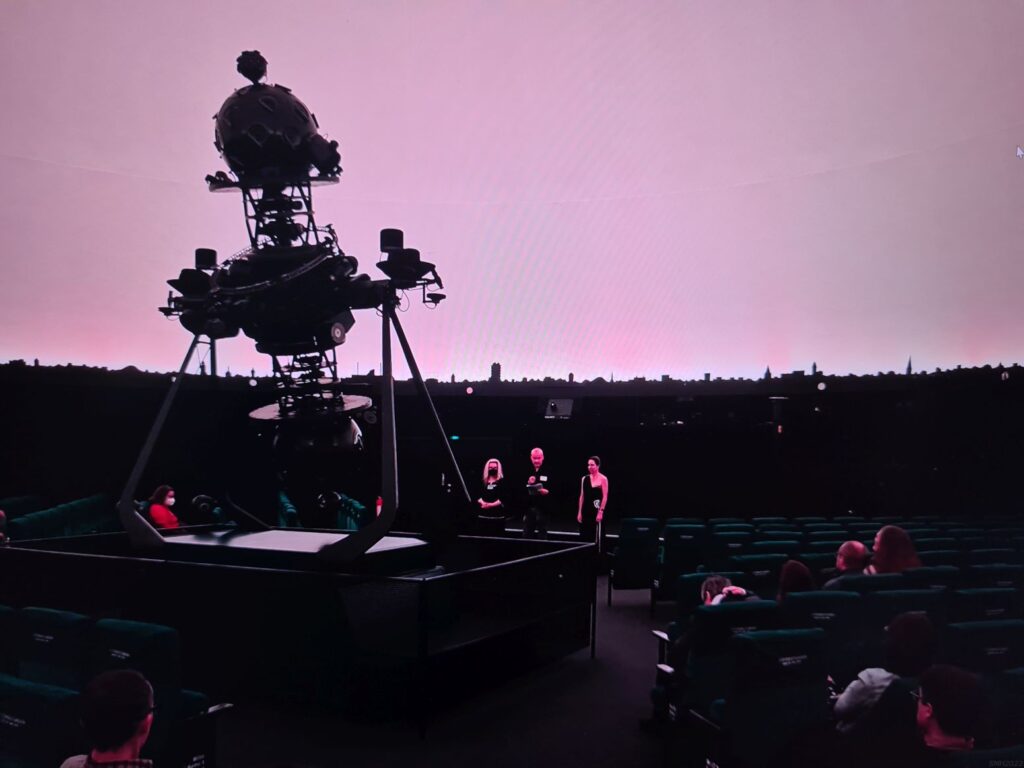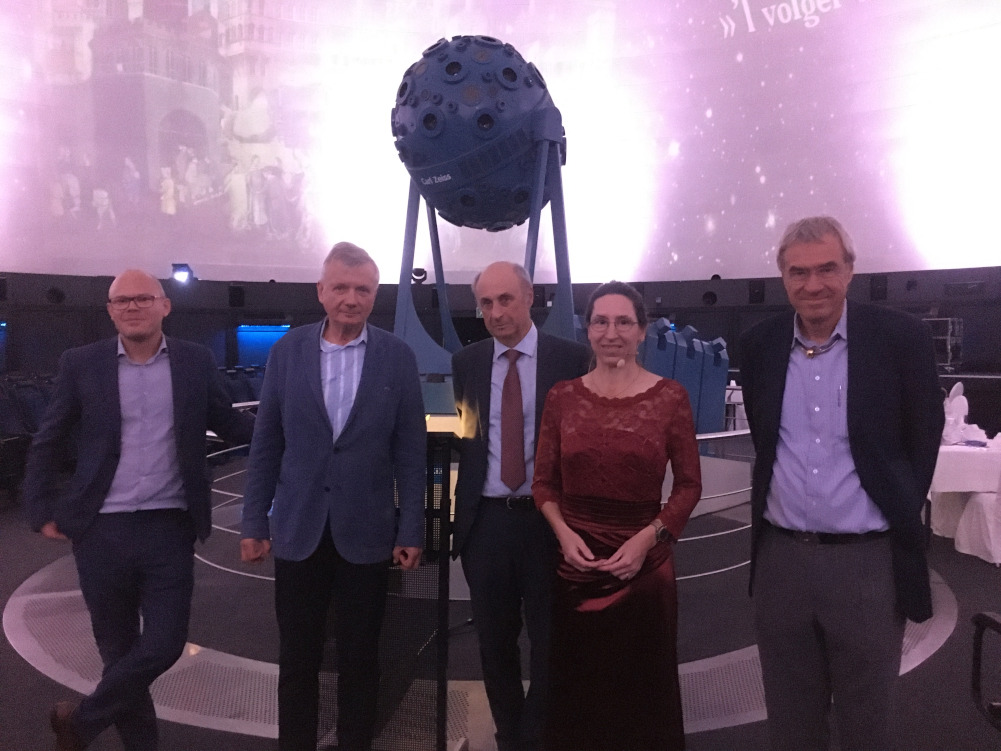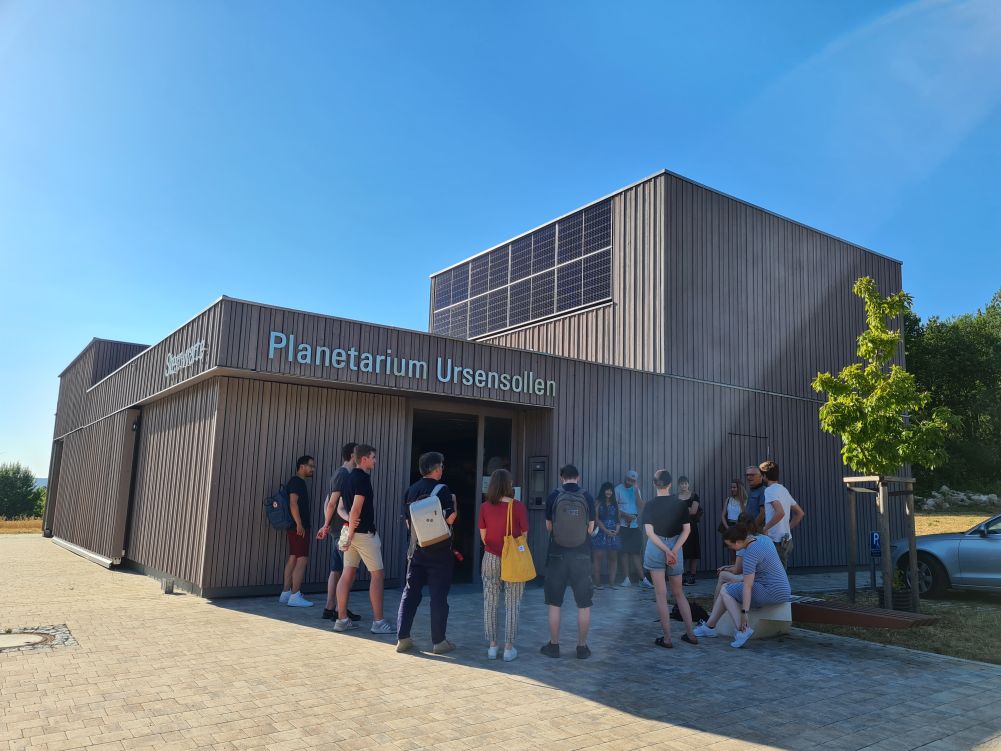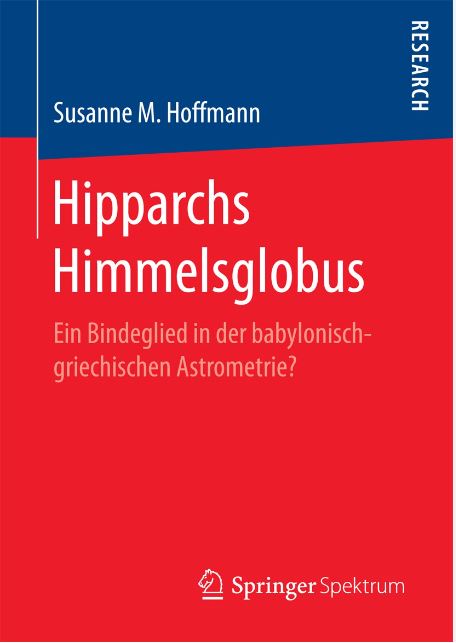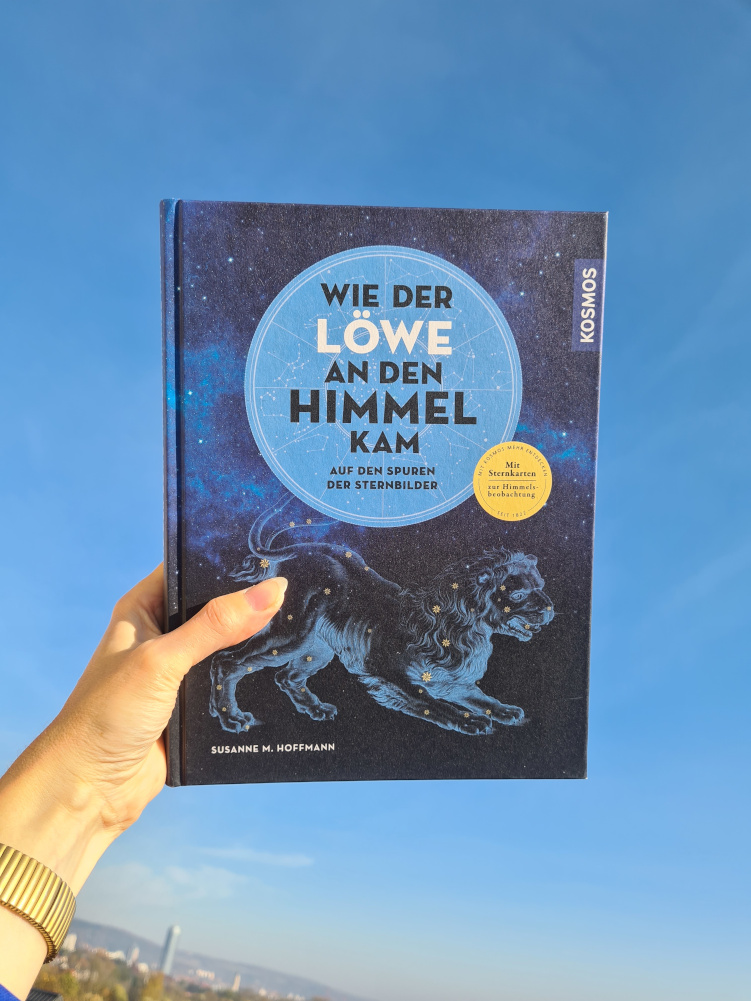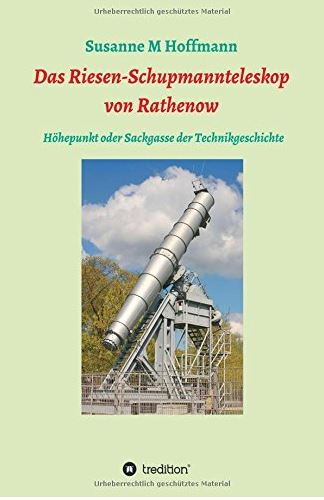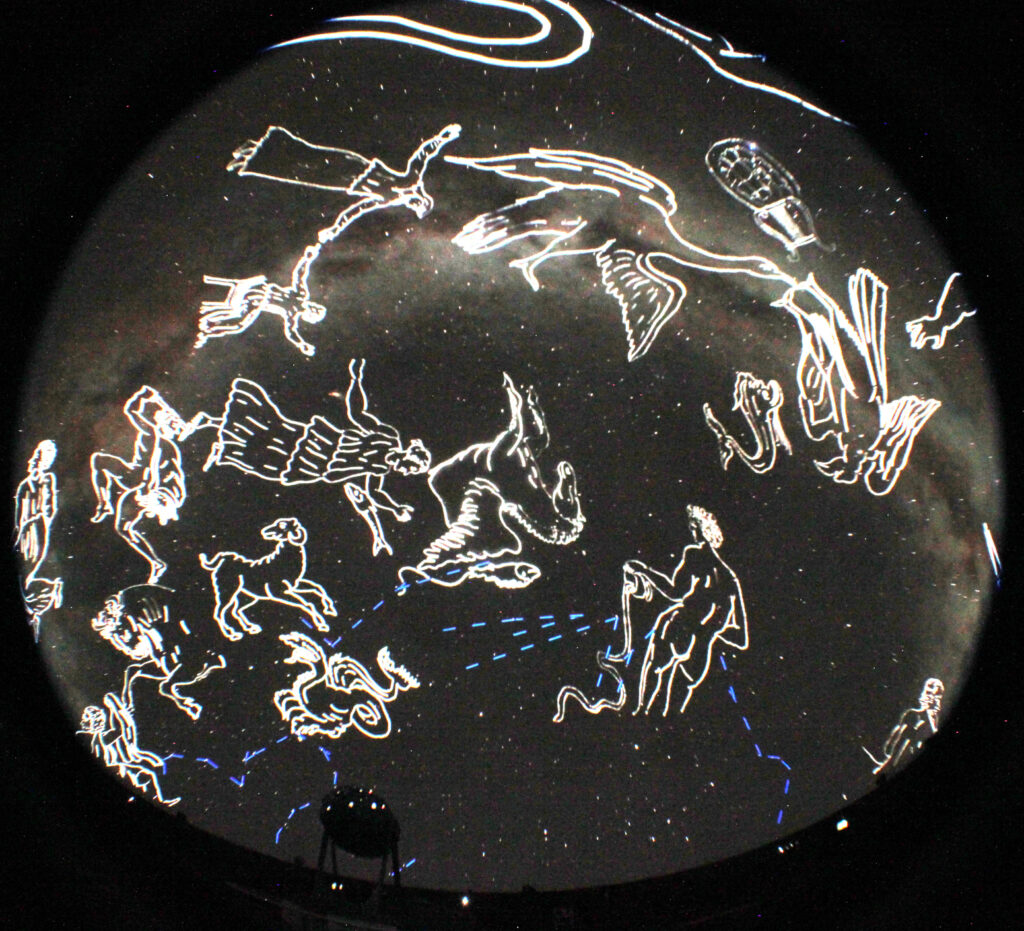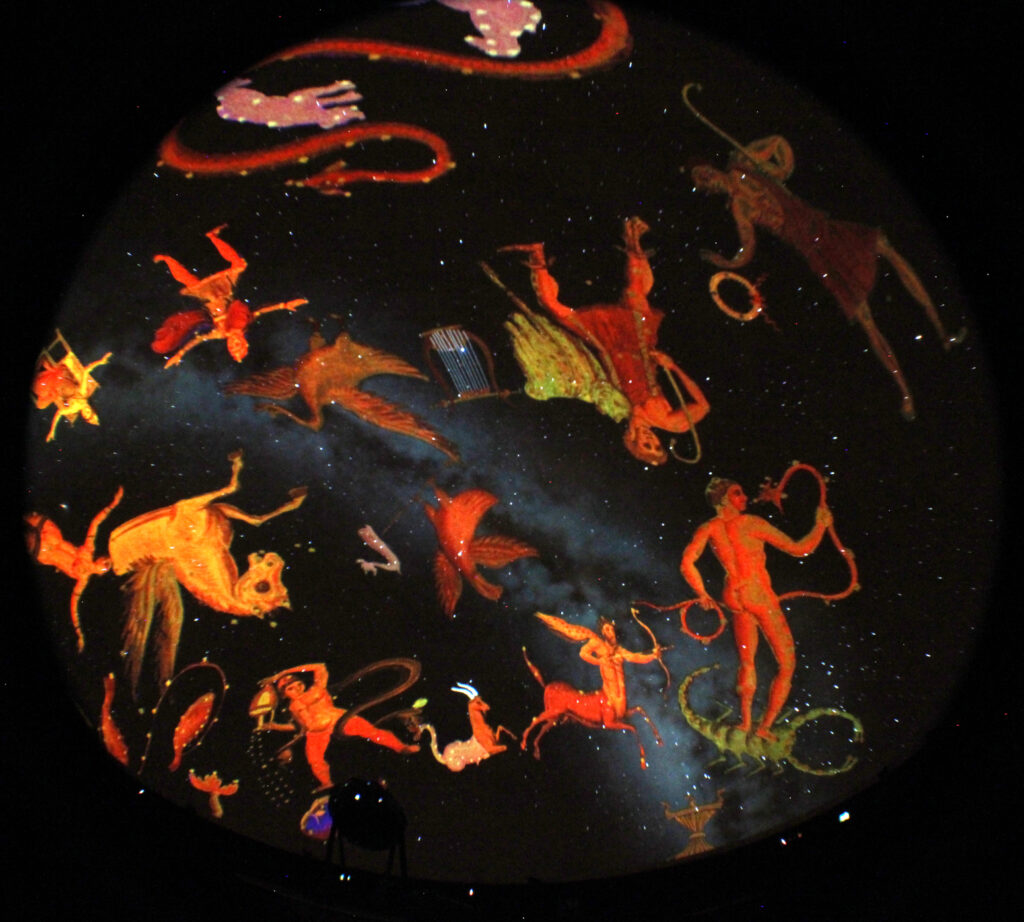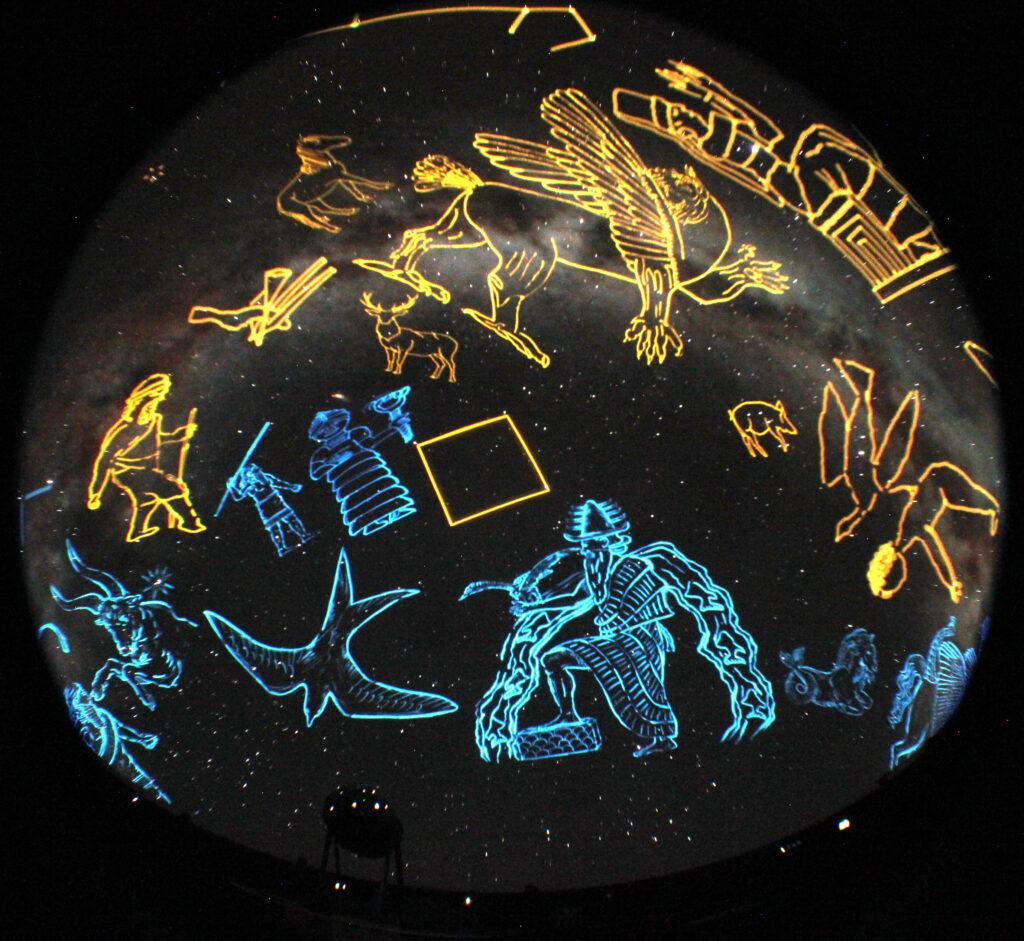Modern Star Names
(IAU WGSN)
I am working on a data management concept for names, cultural backgrounds and etymologies.
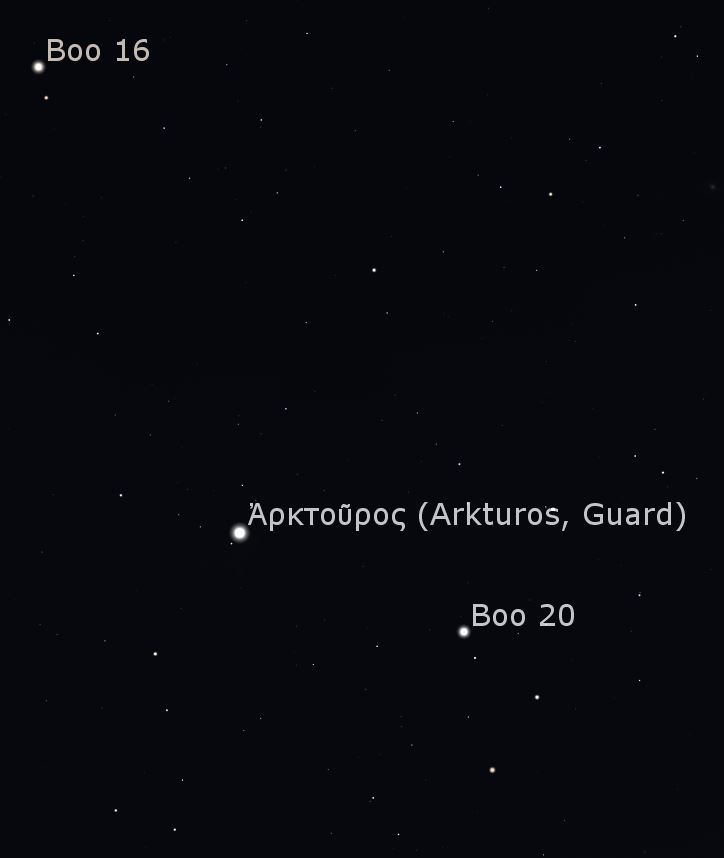
Babylonian Star Heaven
PI subgroup Identifications
The project funded by the Israel Science Foundation is designed to produce a dictionary of Babylonian star names (collaboration of G. Kurtik and W. Horowitz). My co-project is the contribution of revised identifications of the names with stars, star clusters, constellations and all types of asterisms.
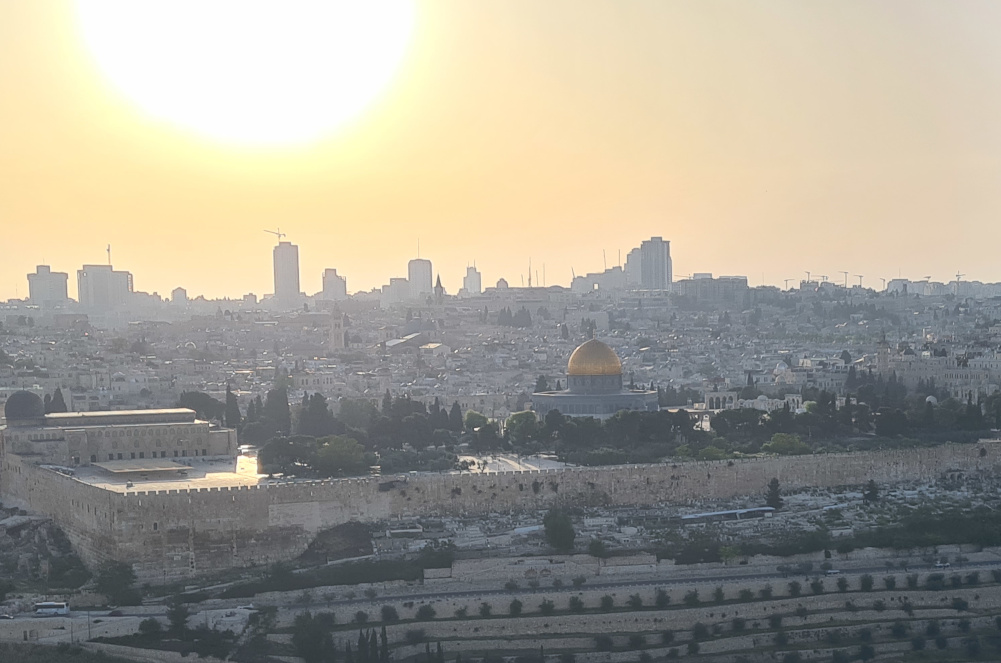
Constellations of the World
(Stellarium Team Member)
The open source planetarium software Stellarium features a growing number of “sky cultures”, i.e. sets of constellations as a result of cultural and historical research. As data curator, I tidy up the meta-data and am caring for its better organisation.
The descriptions as of January 2022 are included in this volume “Astronomy in Culture – Cultures of Astronomy”.
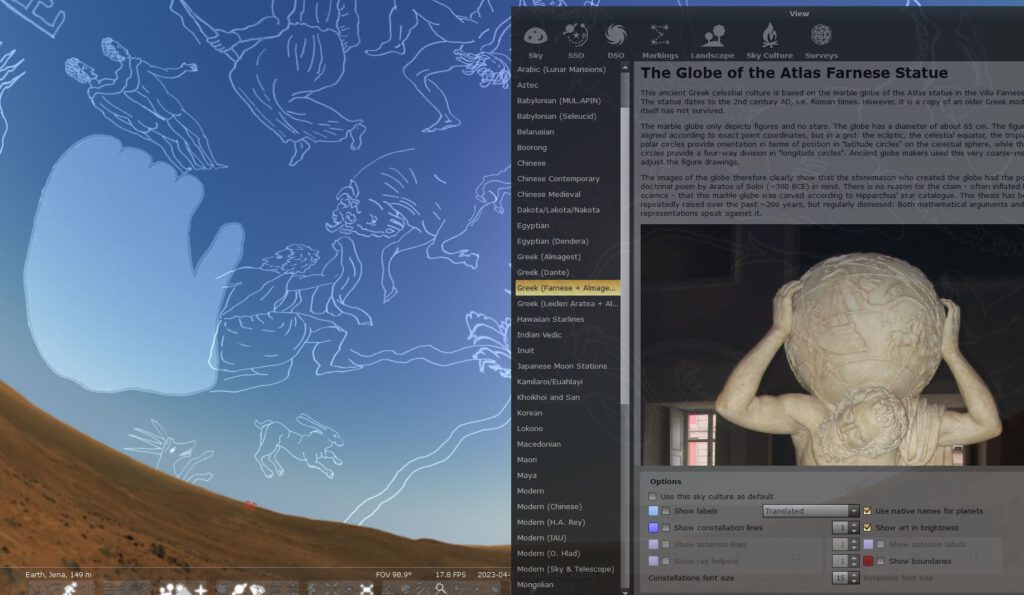
Applied and Computational Historical Astronomy
(2020-2021)
(main organizer)
The term designates the research in astronomy and astrophysics with the method of combining modern and historical data.
The contributions cover several sorts of studies in archaeology and history of astronomy with computer simulations, as well as the usage of historical data for modern research in astronomy and its history.
Star Names and Star Lists
(since 2022)
Planetarium Babylonicum (PI)
Planetarium Sinologicum (PI)
All Skies Encyclopaedia (PI)
Together with colleague scholars distributed all over the world, I am developing a huge global encyclopaedia.
Astronomy in Culture – Cultures of Astronomy
(2021-2022)
(organizer and editor)
The spinter meeting on this topic was organized in collaboration with Prof. em. Dr. Gudrun Wolfschmidt. The contributions to the volume in her series “Nuncius Hamburgensis” cover tangible and intangible astronomical heritage (e.g. observatories and constellations).
Transients
(2017-2022)
( )
Ancient observers occasionally recognized variabilities in the (apparently static) night sky. In particular East Asian astronomers recorded these observations because of their relevance for East Asian astral divination practices. Modern astronomy in the 19th and 20th century started to understand variabilities and eruptions of stars. Therefore, we can know try to identify what ancient observers might have seen. In favourable cases, these identifications could possibly even contribute to modern astrophysics.
Reconstruction of
Ptolemy’s armillary sphere
(2018-2019)
(supervised student)
As a master thesis supervised by me, we constructed an armillary sphere according to the description in the Almagest and performed test observations.
The result is that observations are well possible but it is necessary to calibrate the instrument every few minutes during the night and a planet is necessary for this procedute. This makes the observation of star catalogue a long-term project.
Magnitudes in pre-telescopic star catalogues
(2019)
(supervised student)
The brightness of stars is measured in the strange unit “magnitude” (size) which goes back to antiquity. It is first preserved in the Almagest but at that time not new. It is unknown who invented this unit and why, namely how it was measured but the usual suspect is Hipparchus.
I supervised a master thesis in astrophysics with the topic to study the errorbars of magnitudes in the three pretelescopic star catalogues. With a feasibility study we proved that an observation of these magnitudes with grey wedges (and similarly in a twilight atmosphere) is possible. Additionally, I suggested that the magnitude was not measured in the sky but estimated as templates for star sizes on a globe.
Stars Above Horizon – Citizen Science (App Development)
(2018-2022)
(supervised students)
For the visibility of stars in twilight, I wanted to have a smartphone app in order to collect data from many people (different eyes) and from all over the world.
One student of physics in a project thesis developed a prototype for a feasibility study (2018-2020).
Four students in a software development project in computer science developed the first released version in 2021.
One student of computer science developed an upgrade released in 2022.
Meteorology Beyond Borders
(2022-2023)
(Co-PI / Collaborator)
For Aristotle, “meteorology” was a term to designate everything in the heavens and air that is observed unstable.
This concerns weather phenomena in the sky and in underground caves, transient astronomical objects like comets, novae and supernovae.
In close collaboration with the classicist Dr. Giouli Korobili this website was developed for the presentation of the scientific results of our projects on “Geoanatomy” and “Transients”.
Ptolemy’s constellations in Stellarium
(2019-2020)
(supervised students)
Four highschool students (supervised by me) developed the stick figures of constellations as described in the Almagest.
This was a one year project and first exercise in working with data and ancient Greek text for them.
The awarded a special prize from the Thuringian State Ministery of Culture in January 2021.
ZODIAC goes planetarium
(Babylonian and Egyptian Sky)
2022
(Collaborator)
For the opening of the ZODIAC conference in Berlin in the Berlin Planetarium, I prepared a fulldome talk presenting the visualisations of some Babylonian constellations and the Dendarah zodiac as a not purely Egyptian one.
Travelling in Egypt in the framework of a DAAD exchange project, I met friendly Egyptologists who gave me a tour in Esna and Dendarah. Compared to my work on the reconstruction of Babylonian constellations, this led to some suggestions of a new of the circular Dendarah zodiac.
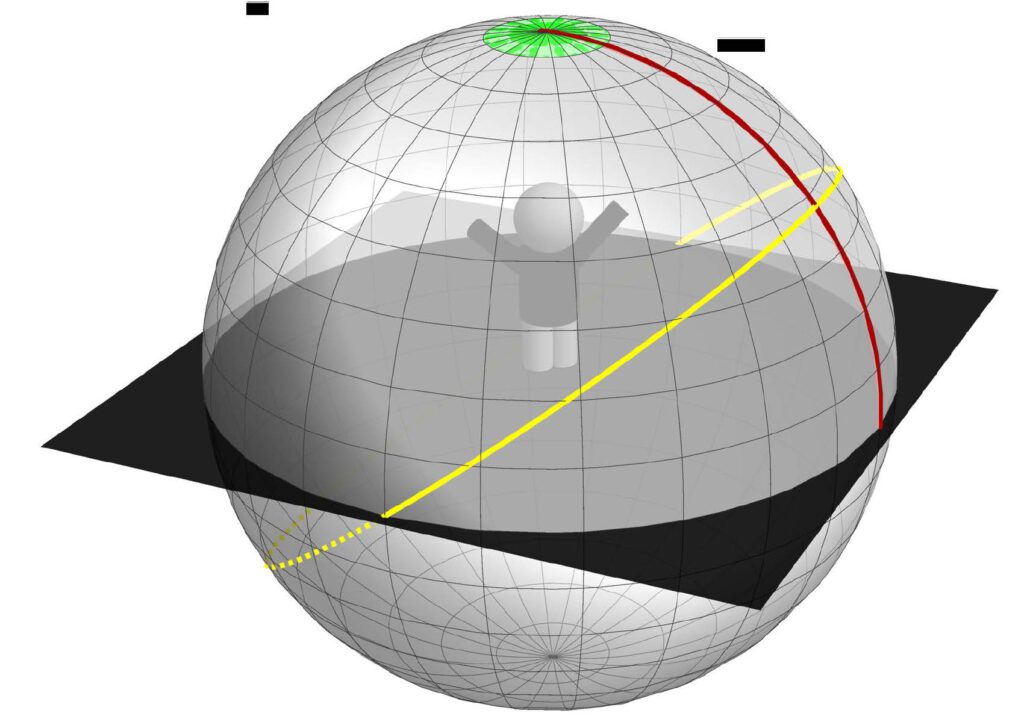
Astronomie in Dante Alighieri
2022
(Collaborator)
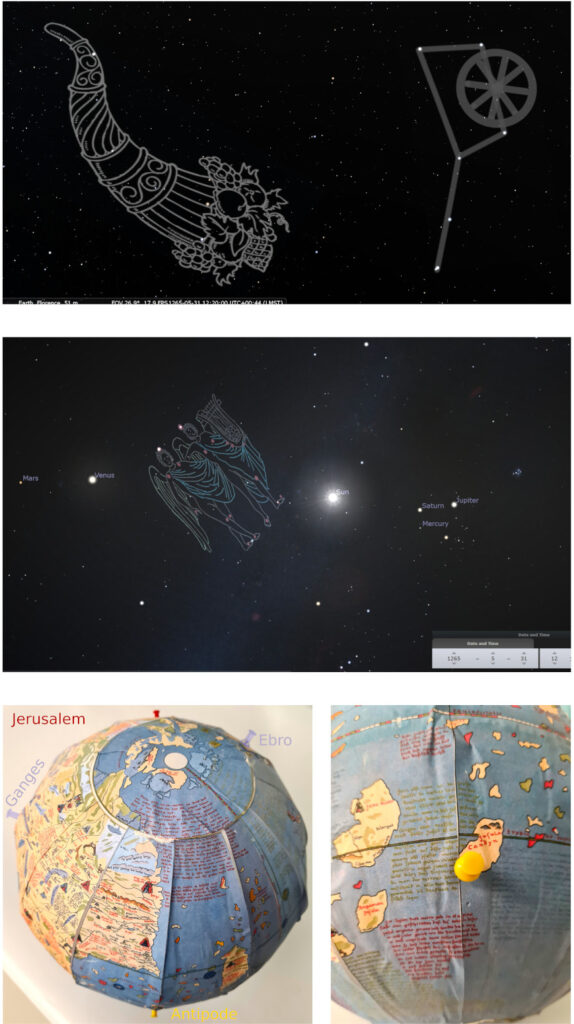
Planetarium Usage in University Education
2022
(PI)
In Germany planetariums are visited in excursions of elementary school classes but not used in higher education.
As modern “Digital Dome Theatres” they have developed far from their original purpose of displaying and educating astronomy.
In 2022 within the project “Planetarische Universität”, I tested various possibilities of using planetariums for university purposes. Besides opening conferences with dome talks, I also used the dome for special visualisations in class (e.g. motion of the Moon). With my students in history of science (and earlier: with teacher training classes), I visited the planetariums of Jena, Nuremberg and Ursensollen.
Hipparchs Himmelsglobus
(Hipparchus’s Celestial Globe)
(2013-2015)
(PI)
Hipparchus is public known as one of the greatest astronomers in antiquity: a brilliant observer who a) discovered a “new star”, b) proved the existence of the precession of equinoxes, c) made the first star catalogue and d) described a new method to make celestial globes.
He lived in a time (2nd century BCE) when Babylonian mathematics was taken over by Greek astronomers which causes the suspicion that he might also have used Babylonian data for his groundbreaking innovations. My new analysis supports this idea but the missing link is not yet found.
History of the 88 Modern Constellations
(2020-2021)
(PI)
The constellations that are used in modern astronomy are an accurate division of the sky. They are based on historical constellations that had never been canonical before the 1920s. Some were invented by astronomers in the early modern era but none of them was invented by “old men at campfires” just for fun as it is frequently presented in planetariums. The systematic transfer and transformation of the constellation images from mnemograms (for seasons) to deities and into the modern images ist outlined in this book.
Rathenower Riesenfernrohr
(Rathenow’s Giant Telescope)
2008
(PI)
The city of Rathenow is located in the middle between Berlin and Hanover. This town is host to the world’s biggest Schupmann telescope of the type “Brachymedial Typ B” (Schupmann 1899). In 2008 the telescope was dismantled and rebuild at another place within the town. I documented this project for the public and studied the oral history of telescope and its maker.
Farnese Globe in Dome
(2017)
(PI)
The marble globe of the Atlas Farnese, a statue from antiquity rediscovered in the 16th century in one of the villas of the Farnese family close to Rome, carries a rather accurate celestial atlas.
My attempt to make them available for planetarium use led to some new results for the interpretation of the globe.
The images are also available as “sky culture” in Stellarium.
Leiden Aratea in Dome
(2020)
(PI)
The Carolingian manuscript of the Aratea is preserved in two versions: one from Leiden, one from Metz. In collaboration with the Jena art historian Prof. Dr. Dieter Blume, I arranged the mediaeval paintings in the dome in order to make them usable for planetarium shows and talks.
The images are also available as “sky culture” in Stellarium.
The MUL.APIN-Planetarium
(2016-2017)
(PI)
MUL.APIN is the earliest known compendium of astronomy. It is written in Akkadian language on clay tablets, dates probably around 1000 BCE (with earlier dates of its components) and contains a “catalogue of asterisms” with which we can reconstruct the Babylonian constellations.
However, these constellations have never been canonical – so, some identifications are rather uncertain or ambiguous (change of time).
Conference Opening 2017
(two Babylonian sky cultures available in Stellarium since 2018)
Long ago
modelling Wolf Rayet stars
student assistent in group of theoretical astrophysics
modelling microlensing lightcurves
thesis in theoretical astrophysics:
observability of moons of exoplanets at large distances
teaching relativity
supervised and co-supervised numerous BA- and MA-theses for the development of teaching units on special and general relativity
Tourismuspreis (2006)
Karawane der Astronomie
walking tours in the desert, one week no water for washing etc., only sand dunes, a mattress and dromedaries for the luggage…
lessons of astronomy in the evening and meditation during the day
Theatre Play in Planetarium
(2003)
to use the sky display in the scenary of a theatre play is a great combination of scientific correctness in edutainment
The Earth’s circumference at school excursion (1997)
During a school excursion to Greece, we made measurements of the length of the shadow of some pencils in order to determine the height of the Sun. Comparing this value to the one from a friend who measured the same day in Berlin, we determined the circumference of the Earth with this ancient method.
Invented Astronomisches Sommerlager (ASL)
Inspired by the huge success of an international astronomical youth camp on the occasion of the total solar eclipse 1999, together with other astronomy students I invented a regular German-speaking youth camp in 2000 and developed it to a regular yearly event 2000-2006.
In 2007, I organized the first Berlin Space Camps, in 2008, an excursion to observe the total solar eclipse in Siberia.
Established VEGA e.V.
In order to create a better framework and more free environment for young astronomers, I established the body corporate VEreinigung für juGendarbeit in der Astronomie VEGA e.V. The association was entered in the register of associations at the Berlin District Court in 2004.
Stiftung (Foundation)
When I stopped being “young” myself (e.g. grew older than 29 Earth years), I aimed to create a legal body that supports my successors among the young astronomers to organize youth camps like the ASL and other VEGA-activities.
Since long time, I did not participate in any of their activities but I am tremendously happy that it still exists and supports young people to discover the universe.
